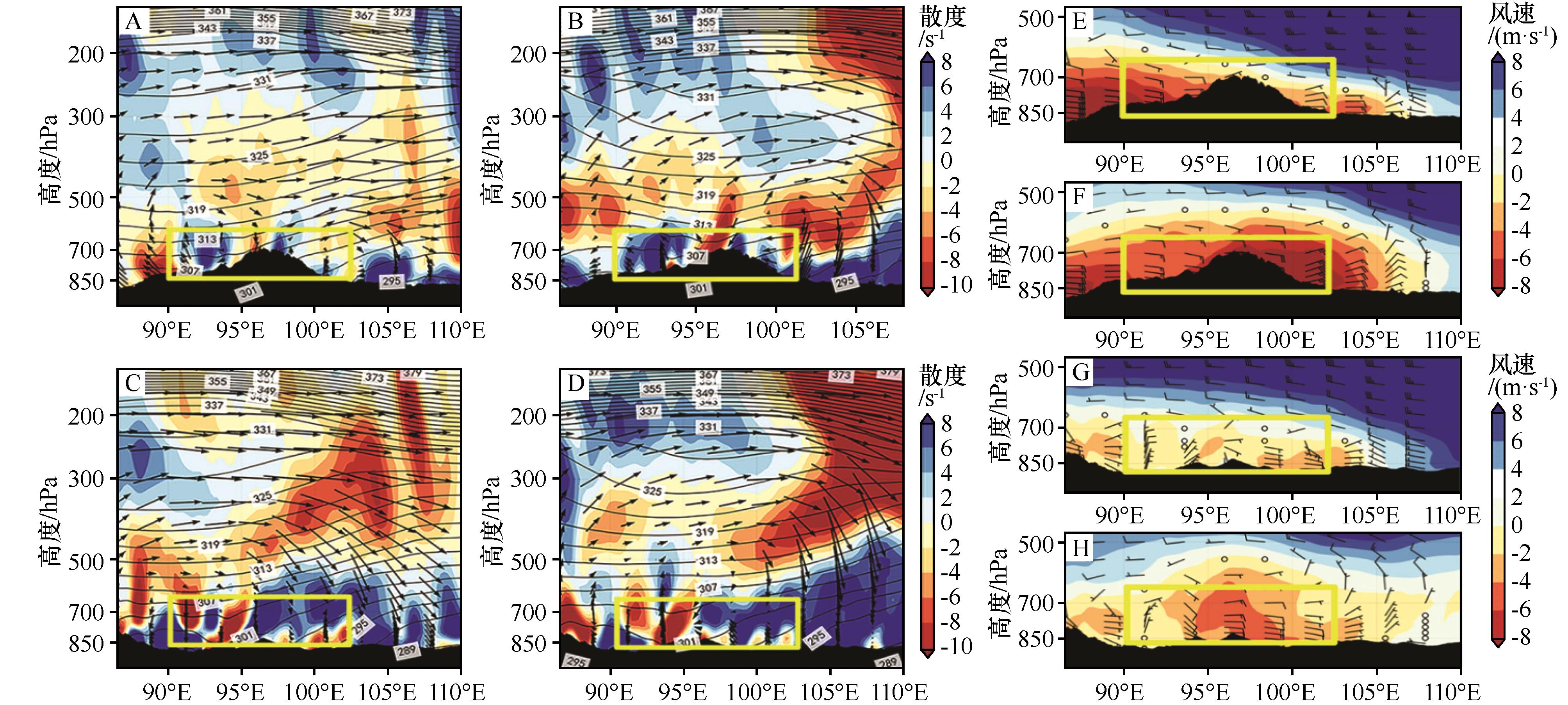戈壁沙漠沙尘向青藏高原传输路径和传输机制:以2020年4月一次沙尘事件为例
Transport of dust from Gobi Desert to the Tibetan Plateau and its dynamic mechanism: a case study of a dust event in April of 2020

戈壁沙漠沙尘向青藏高原传输路径和传输机制:以2020年4月一次沙尘事件为例 |
| 陈俊言, 贯雅雯, 张越, 陈渔, 毕鸿儒, 娄高僮, 郭馨阳, 王洋, 陈思宇 |
|
Transport of dust from Gobi Desert to the Tibetan Plateau and its dynamic mechanism: a case study of a dust event in April of 2020 |
| Junyan Chen, Yawen Guan, Yue Zhang, Yu Chen, Hongru Bi, Gaotong Lou, Xinyang Guo, Yang Wang, Siyu Chen |
| 图13 河西走廊-祁连山脉(38°—41°N)上空在4月15日(A)与16日(B)的经向平均位温(黑色线条)、散度(红色表示辐合区,单位为s-1)与流场(矢量箭头)的垂直剖面,在15日(E)与16日(F)的风速(红色区为东风,单位为m·s-1)与合成风矢的经向剖面。戈壁沙漠西部(41°—44°N)上空在4月15日(C)与16日(D)的经向平均位温、散度与流场的垂直剖面,在15日(G)与16日(H)的风速与合成风矢的经向剖面。黄色线框为此次沙尘传输至青藏高原东北部的主要范围 |
| Fig.13 The vertical profiles of the average potential temperature (black lines), divergence (red indicates the convergence area, unit is s-1), the flow field (vector arrow) on April 15th (A) and 16th (B), and the wind speed (the red area is easterly, unit is m·s-1) and the synthetic wind vector on April 15th (E) and 16th (F) over the Hexi Corridor-Qilian Mountains (38°-41°N); The vertical profiles of the average potential temperature (black lines), divergence (red indicates the convergence area, unit is s-1), the flow field (vector arrow) on April 15th (C) and 16th (D), and the wind speed (the red area is easterly, unit is m·s-1) and the synthetic wind vector on April 15th (G) and 16th (H) over the western Gobi Desert of Mongolia (41°-44°N) |

|